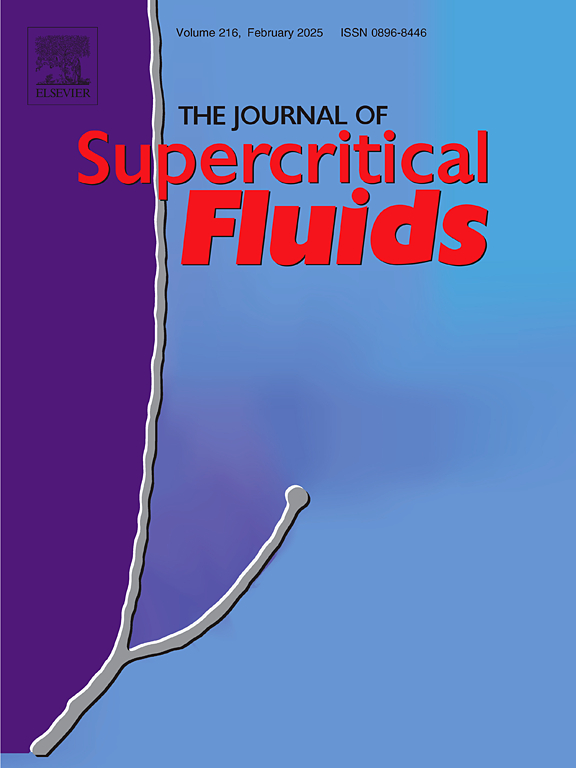超临界CO2发泡制备低介电性能和阻燃性能的长链支化聚芳酯泡沫
IF 4.4
3区 工程技术
Q2 CHEMISTRY, PHYSICAL
引用次数: 0
摘要
高频、高速通信的飞速发展,对具有低介电性能和优异稳定性的电子元件提出了更高的要求。本研究选取工程塑料聚芳酸酯(PAR)作为基体材料。为了改善其性能,使用长链支链改性剂ADR来改善其流变学、力学和发泡性能。以超临界CO2为发泡剂,制备了长链支链PAR泡沫。结果表明,泡沫密度达到0.364 g/cm³ ,泡沫孔小且排列整齐(10 μm),发泡性能得到显著改善。表征表明,该泡沫具有优异的机械性能,优异的低介电损耗(0.00217),低吸水率和优异的阻燃性,使其成为高频,高速通信应用的衬底材料。本文章由计算机程序翻译,如有差异,请以英文原文为准。
Preparation of long-chain branched polyarylate foam with low dielectric and superior flame retardant performance by supercritical CO2 foaming
The rapid advancement of high-frequency, high-speed communication has increased the demand for electronic components with low dielectric properties and excellent stability. This study focuses on polyarylate (PAR), an engineering plastic, selected as a matrix material. To improve its properties, ADR, a long-chain branched modifier, was used to enhance rheological, mechanical, and foaming behavior. Supercritical CO2 was employed as a foaming agent, producing long-chain branched PAR foams. The results showed significant improvements in foaming performance, with a foam density of 0.364 g/cm³ and small, well-arranged cells (10 μm). Characterization revealed that the foam possesses outstanding mechanical properties, excellent low dielectric loss (0.00217), low water absorption, and superior flame retardancy, making it a promising substrate material for high-frequency, high-speed communication applications.
求助全文
通过发布文献求助,成功后即可免费获取论文全文。
去求助
来源期刊

Journal of Supercritical Fluids
工程技术-工程:化工
CiteScore
7.60
自引率
10.30%
发文量
236
审稿时长
56 days
期刊介绍:
The Journal of Supercritical Fluids is an international journal devoted to the fundamental and applied aspects of supercritical fluids and processes. Its aim is to provide a focused platform for academic and industrial researchers to report their findings and to have ready access to the advances in this rapidly growing field. Its coverage is multidisciplinary and includes both basic and applied topics.
Thermodynamics and phase equilibria, reaction kinetics and rate processes, thermal and transport properties, and all topics related to processing such as separations (extraction, fractionation, purification, chromatography) nucleation and impregnation are within the scope. Accounts of specific engineering applications such as those encountered in food, fuel, natural products, minerals, pharmaceuticals and polymer industries are included. Topics related to high pressure equipment design, analytical techniques, sensors, and process control methodologies are also within the scope of the journal.
 求助内容:
求助内容: 应助结果提醒方式:
应助结果提醒方式:


